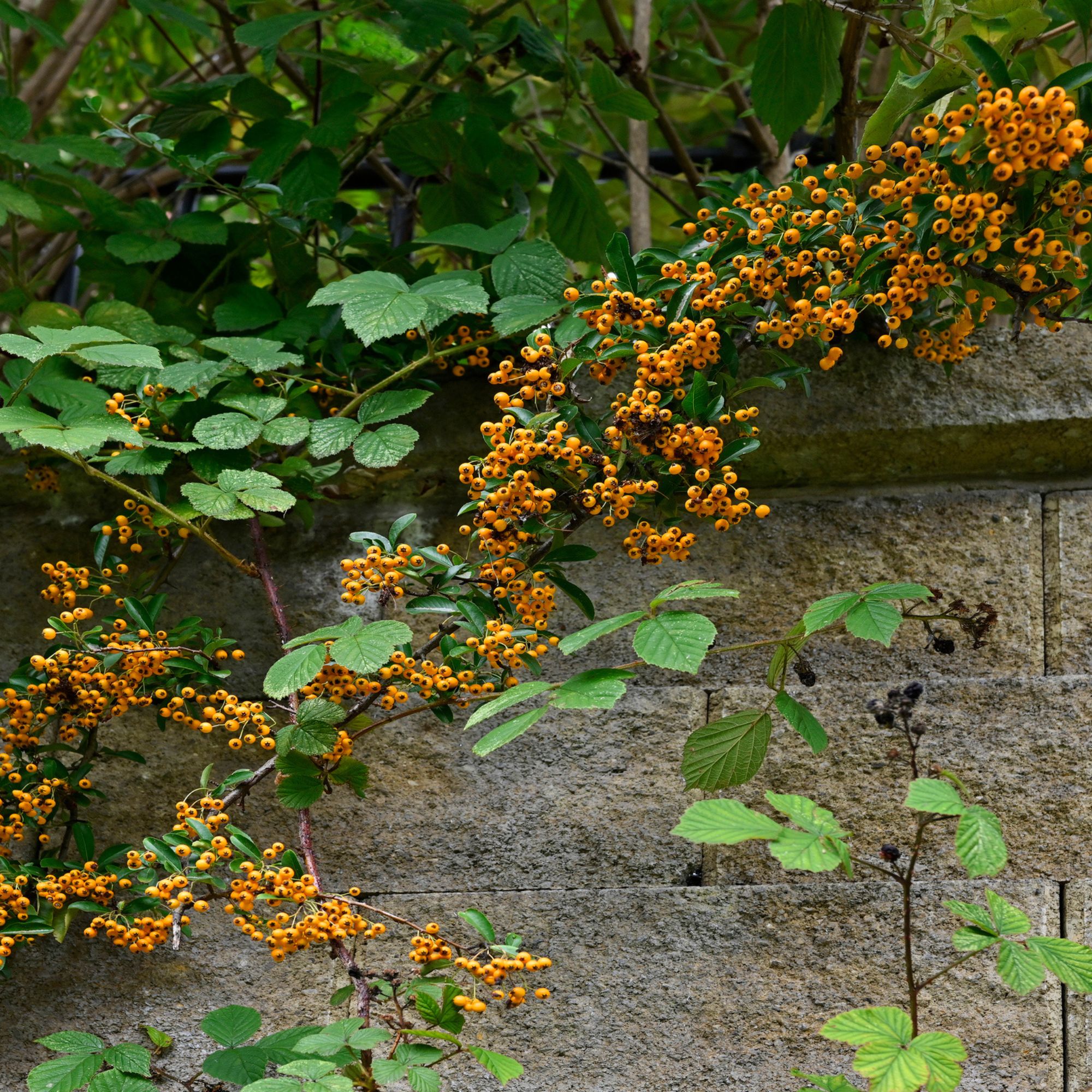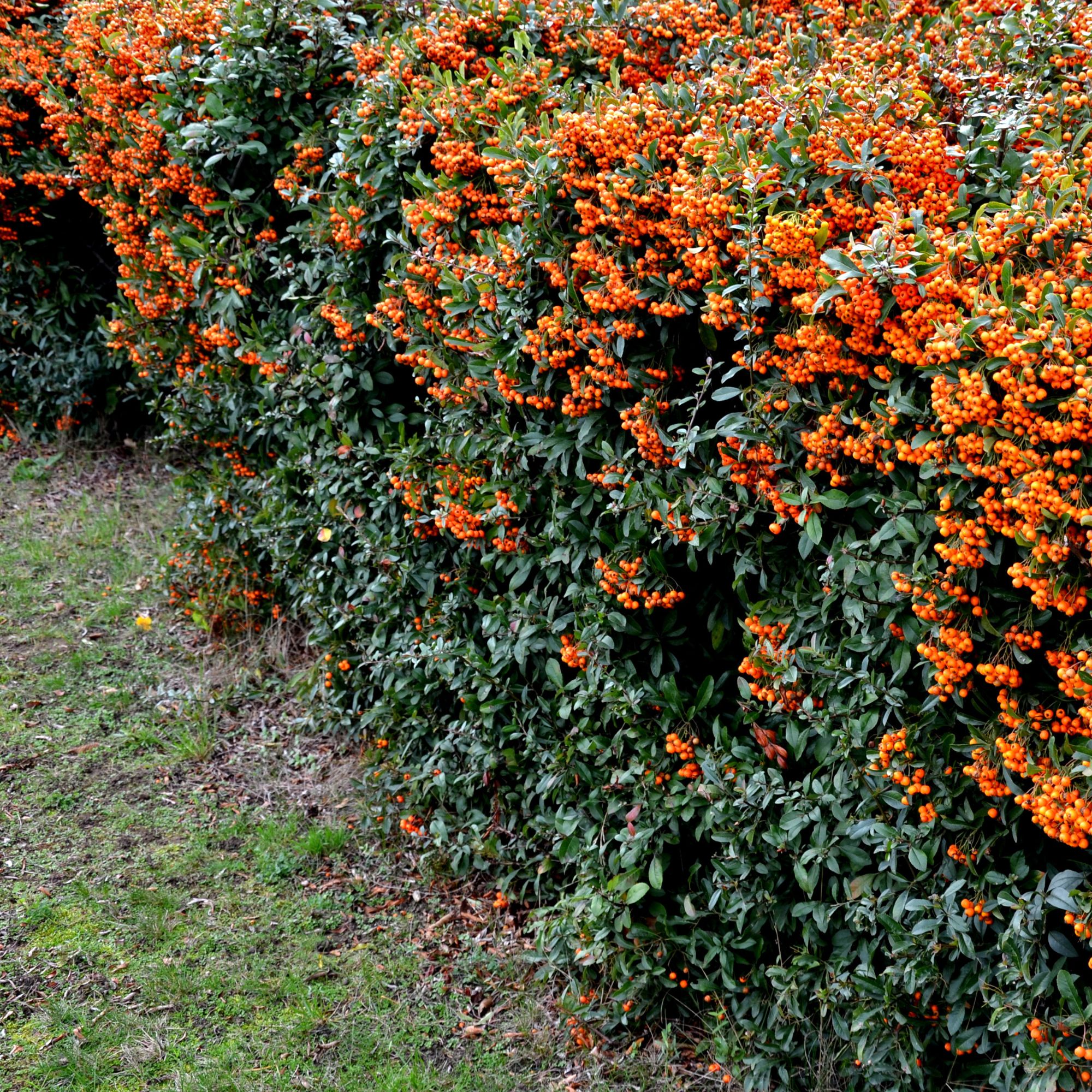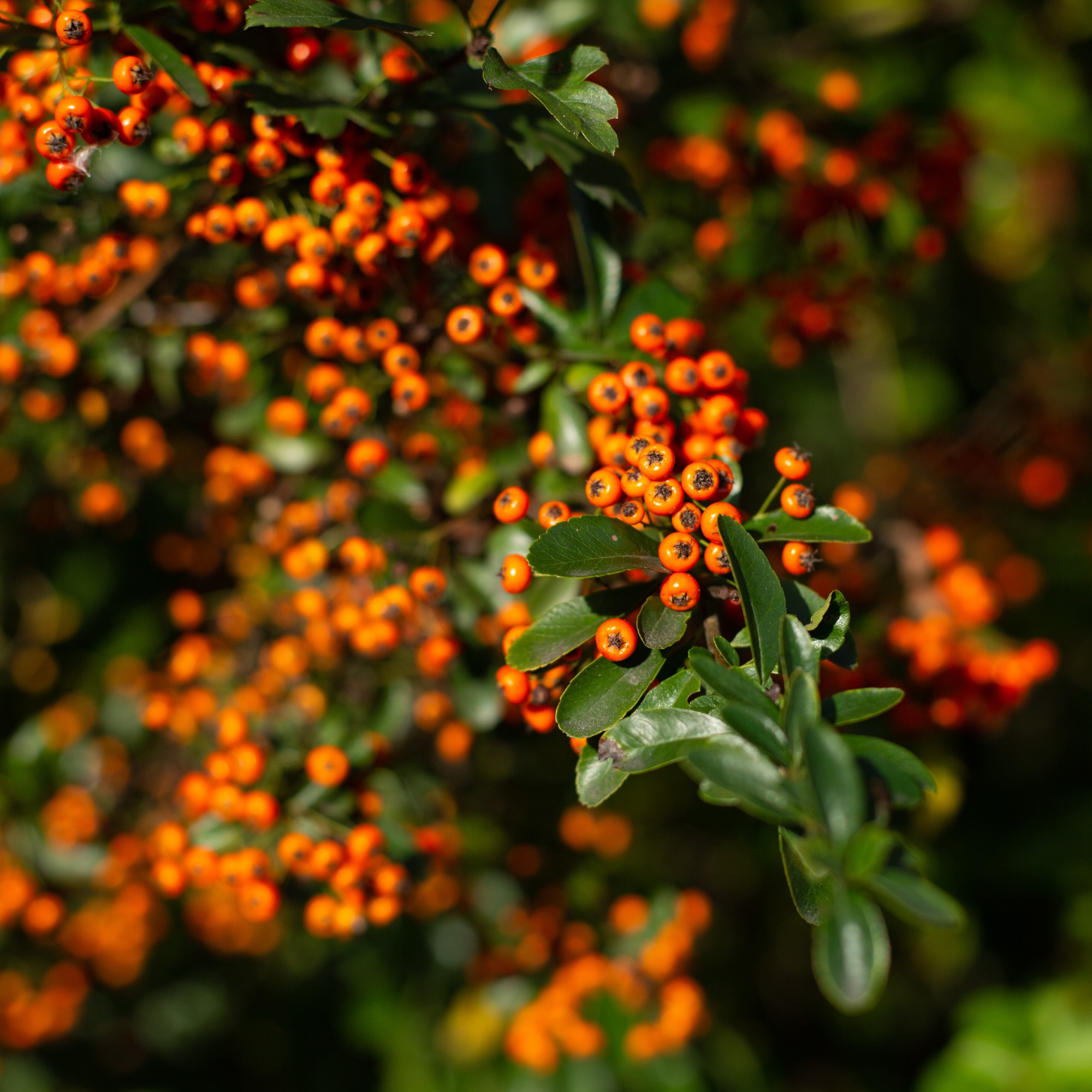
No matter whether you call it pyracantha or firethorn, one thing we can all agree on is that this plant is as autumnal as it gets. Sure, firethorn offers beautiful white blooms in the spring, but the vibrant red and orange berries in autumn are like nothing else. And if you’re lucky enough to have this plant on your property, you need to know when to prune pyracantha.
Loved by humans and birds alike, pyracantha is a welcome addition to any garden idea - especially if you’re looking to create a wildlife garden. And while firethorn is generally considered to be one of the most low-maintenance outdoor plants out there, they still require a little TLC if you want to ensure both the blooms and berries come back next year.
However, choosing when to prune pyracantha depends entirely on your variety, which is why we’ve got all of the information you need to know below - whether you’re growing a firethorn hedge, shrub, or wall-training variety.
When to prune pyracantha hedges

The beauty of pyracantha is that it can be grown in so many different ways, and many people utilise the height and thickness of firethorn to block out their neighbours as one of the best hedging plants.
But anyone who has ever tried to prune hedges will know that you need to get the timing and the technique just right. So, when should you prune firethorn hedges? Experts suggest giving your pyracantha hedge a haircut a few times (around 2-3 times) between spring and summer - ideally after flowering.
Pruning your firethorn hedge at this time will most likely result in the loss of a fair few berries, but if you want to maintain the size and neat shape of your hedge, this is a sacrifice you’ll have to make. They’ll grow back soon enough.
Of course, the best time to prune hedges is also determined by whether you have any nesting birds in your pyracantha. If you prune it during nesting season and disrupt the birds, you could be faced with a hefty fine.
Gardening expert Calum Maddock at HomeHow.co.uk, also advises, ‘Make sure to use sharp, clean pruning shears so that you can easily make clean cuts.’
When to prune free-standing pyracantha

Many of the best evergreen plants for a garden are shrubs, and pyracantha can also be added to that list. Firethorn is ideal for growing as a free-standing shrub - and choosing the perfect time to prune it is easy. After all, it follows the same timeline as pruning other evergreen shrubs.
Technically, you don’t have to prune firethorn if you don’t want to. But if you want to tidy them up or control the size, it’s best to do this in mid-spring.
Morris Hankinson, Managing Director of Hopes Grove Nurseries, agrees that this is the best time. He says, ‘This is so that you can clearly see where the flowers are and avoid pruning back those stems, as this will also be where the berries are produced later in the year. Prune back any diseased, damaged or dead branches, as well as any wayward growth. By this, I mean branches or shoots that are growing in different directions, causing you to lose the overall shape of your pyracantha.’
Just remember that pruning isn’t the same as cutting back, so it’s important to understand the distinction before getting too secateur-happy.
When to prune wall-trained pyracantha

While it’s important to note that not all pyracantha varieties lend themselves to being wall-trained, varieties such as Pyracantha coccinea ‘Red Cushion’ and Pyracantha Saphyr Orange ‘Cadange’ are ideal for those who want to hide an ugly garden wall or fence with these vibrant berries.
And if you have wall-trained firethorn, you’ll want to add pruning to your list of garden jobs to do in May - and also your list of plants to prune in August. Yes, wall-trained pyracantha should actually be pruned twice.
In spring, you can prune any outward shoots that look untidy or out of place. In late summer, you can prune a little harder and take your firethorn back further. Just make sure that you’re pruning just above the cluster of berries as this will promote even bigger flowers and berries next year.
What you'll need
Pyracantha thorns are no joke, but these thornproof gloves will keep you safe. They're made from high-quality leather but remain lightweight and breathable.
This set will set you up for success no matter whether you're pruning pyracantha shrubs, hedges, or wall-trained varieties.
Before pruning your pyracantha - no matter what time of year - you should always clean your tools. If not, you may expose this autumn favourite to disease.
FAQs
Can you cut Pyracantha back hard?
Yes, you can. Pyracantha is extremely hardy and will tolerate a hard prune - but only if you choose to do so at the right time of year. So, it’s best to follow the rules of when to prune pyrancantha depending on the type that you have.
And while you can cut pyracantha by around ⅓ (or even ½ if you really want to renovate the plant), just be warned that this will affect the fruiting and flowering. In some cases, it may take a few years to re-establish itself.
However, you also need to consider the age of your firethorn. While you can prune older, established pyracantha back hard, you need to be careful for younger plants. Gardening expert Calum Maddock at HomeHow.co.uk says, ‘To keep you plant looking its best and to keep it in the best condition, avoid any heavy pruning in the first year after planting.’
Can you use a hedge trimmer on a Pyracantha?
If you have a large pyracantha hedge, you can use a hedge trimmer. This can make the pruning process much easier - especially if you want to create a neat and tidy hedge shape. However, it’s probably still worth having some smaller secateurs or pruning shears nearby for more precise cuts.
If you have a smaller pyracantha hedge or a bush, you may find that a hedge trimmer is too large. In that case, stick with pruners.
So, there you have it! Now you know that when to prune pyracantha depends entirely on the type you have.







